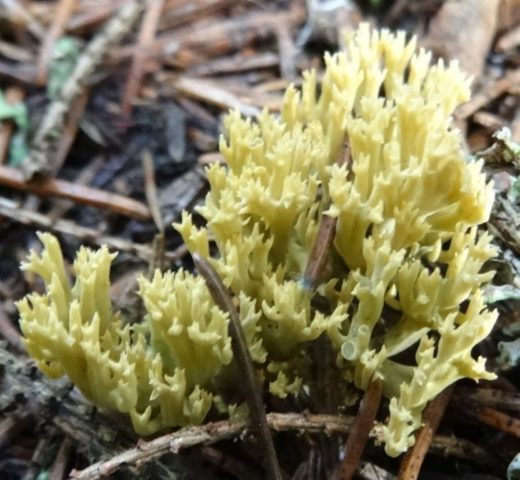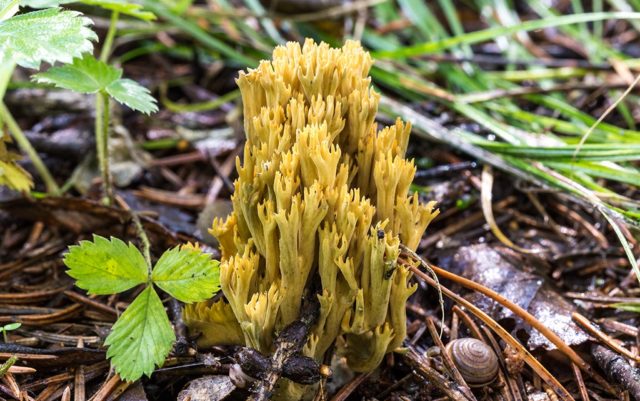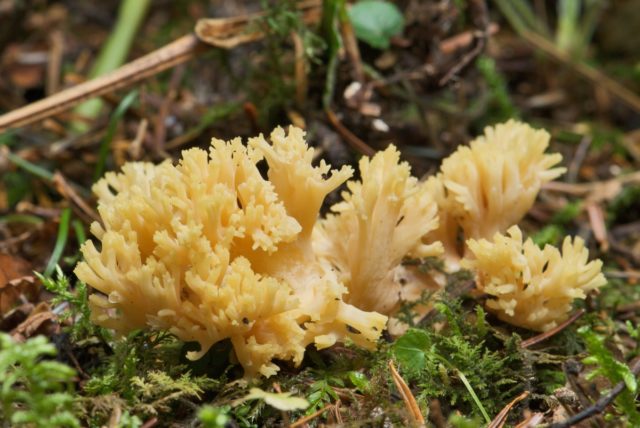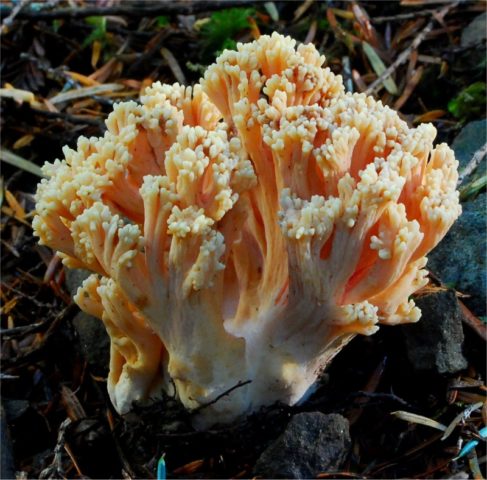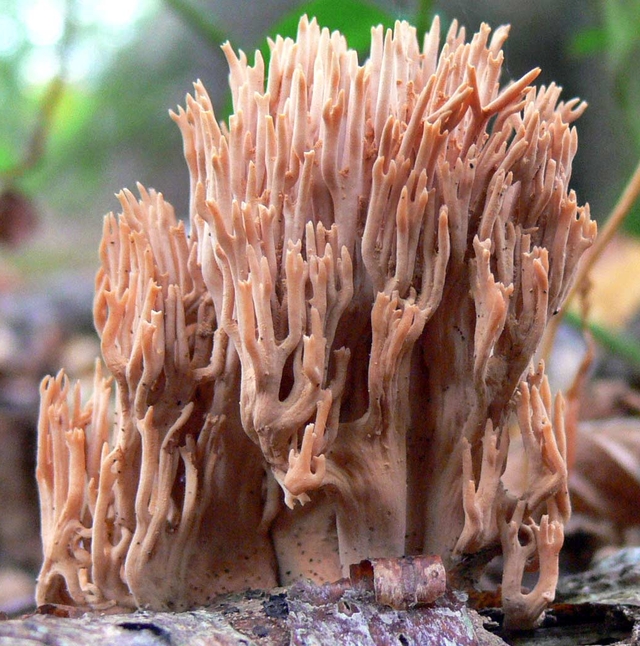Content
Feoklavulina fir or horned fir is an inedible representative of the mushroom kingdom of the Gomfov family. The species was first heard in 1794. It grows among spruce trees in temperate regions. It begins to bear fruit from the end of summer, it lasts until late autumn. Since the species has edible counterparts, in order not to make a mistake during mushroom hunting, it is necessary to study the external description, view photos and videos.
Where do fir pheoclavulins grow?
Feoklavulina fir prefers to grow in pine and fir forests, on a needle-like bed in well-lit places. The species is rare, feels comfortable in regions with a temperate climate. After the onset of frost, the dense pulp becomes watery, and the fungus dies.
What fir pheoclavulins look like
In order not to harm your health, you need to know the external characteristics of the fungus and view the photo. This type of cap and legs does not have. The fruit body is in the form of a small coral, reaching a height of up to 5 cm and a width of up to 3 cm. The coral branches are flattened and erect, branching at the top, forming beautiful decorative crests. Coral mushroom is colored yellow-green, with mechanical damage, the color changes to blue-emerald or dark olive.
The lower part of the fruiting body is short, light emerald in color. The surface is smooth, closer to the surface of the earth, a whitish mycelium is clearly visible, partially extending into the spruce substrate. The pulp is dense, fleshy, colored in a light olive color. The fruiting body has a sweetish taste with a bitter aftertaste. The smell is faint, reminiscent of the aroma of damp, moist earth.
Is it possible to eat fir slingshots
This representative of the gifts of the forest belongs to the inedible species, but in some sources the species is considered conditionally edible. Before cooking, many mushroom pickers soak the harvested crop for about a day, rinse thoroughly and boil for 15-20 minutes. If there is a desire to eat the species, it is necessary to collect only young specimens, since in old mushrooms the fruit body is tough and bitter.
How to distinguish fir slingshots
Fioclavulin fir, like any representative of the mushroom kingdom, has edible and inedible counterparts. These include:
- Fioclavulin Invala - this copy belongs to the 4th category of edibility. The fruiting, coral body is light yellow. A branched bushy mushroom representative prefers to grow in small families in shady places, on a dry spruce bed. Begins fruiting from July to October.To get rid of bitterness, the harvested crop is soaked before cooking for 10-12 hours, periodically changing the water. After boiling, the mushrooms can be fried and stewed.
- Feoklavulin yellow - a conditionally edible forest inhabitant that grows in coniferous and mixed forests. The fruit body is 10-15 cm high, painted in bright yellow color. It grows in families, begins bearing fruit from August to October. The pulp is firm and fleshy. Young representatives exude a pleasant herbal aroma. The taste of the mushroom is poorly expressed, so there are not many fans of this species. This copy is not recommended for children and people with gastrointestinal diseases.
- Feoklavulin beautiful Is a large coral mushroom that grows in deciduous forests from late summer to mid-October. The fruit body grows up to 20 cm and is colored in several colors: pink, whitish and ocher. The pulp is dense, fleshy, with mechanical damage it turns red. Bitter taste, no pulp. This specimen is poisonous, when eaten, it causes intestinal poisoning.
- Feoklavulin hard - an inedible, but not poisonous specimen. The coral-shaped fruiting body is light yellow or brown. The dense pulp has a pleasant aroma. In cooking, the mushroom is not recommended to be used because of the burning-bitter pulp. A rare species, it grows in the Far East and in the European part of Russia, in deciduous and coniferous forests. Prefers to settle on rotten wood, stumps or deciduous substrate surrounded by small shrubs.
Conclusion
Feoklavulina fir is an inedible representative of the mushroom kingdom. Grows in spruce forests, on a dry, needle-like substrate. Enters fruiting in autumn, like many forest "inhabitants". Therefore, in order not to confuse it with edible doubles, you need to know the external description and view the photo.
